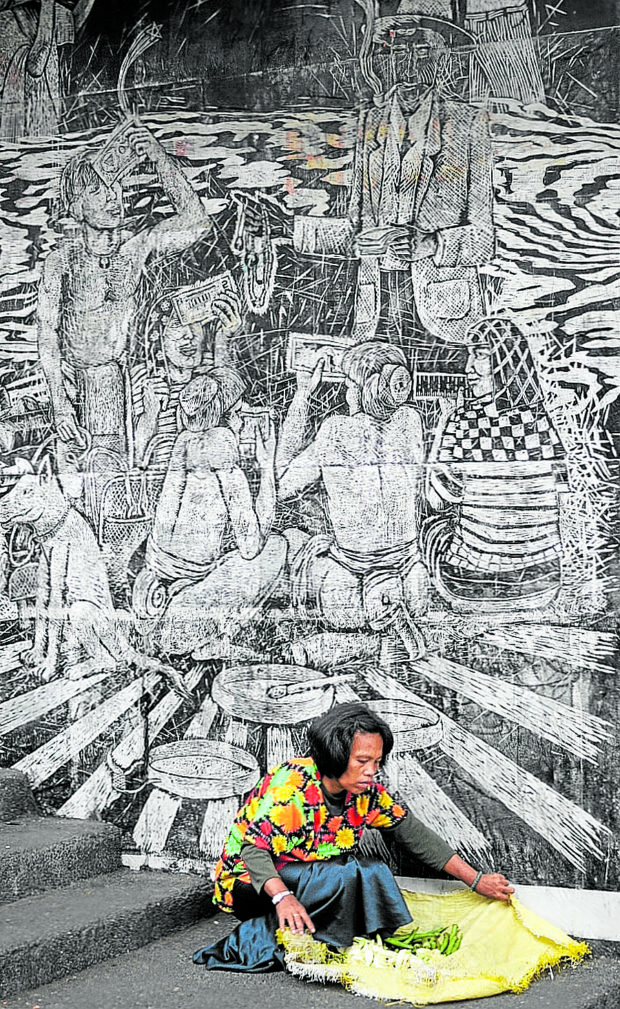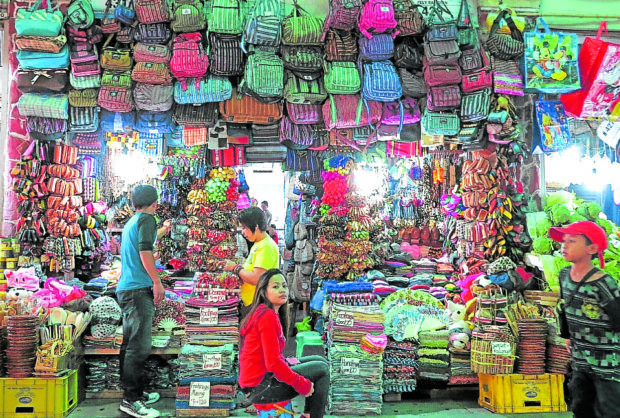By: Vincent Cabreza – Reporter/Inquirer Northern Luzon / March 21, 2021
The summer capital’s main trading zone has not only given livelihood to locals and migrants, but helped build a community
BAGUIO CITY, Benguet, Philippines — Freelance writer Luchie Maranan describes herself as “laking-palengke” (someone who grew up in the public market), as she remembers how the city’s marketplace gave her migrant family an opportunity to have a better life in a new city after the war in the late 1940s.
“Our parents Diego and Leonora migrated to Baguio from Batangas (province) in August 1949. They had heard that the mountain city could provide livelihood away from the quaint, rural villages of postwar Batangas,” said the 62-year-old Maranan, recalling in an email to the Inquirer a story shared by her parents.
s she was growing up, Maranan would hear her parents tell family members about how they sought shelter at the public market, just like what other new settlers did, paying a nearby hotel so they could bathe and use its toilets.
Her parents started from scratch and had to save up until 1952 to purchase stores at the Baguio public market.
The family’s dry goods stores were adjacent to the original Baguio Stone Market, built during the time of the Americans in the early 1900s, and which survived the Japanese occupation and bombing at the end of World War II in 1945.

Pioneers
“The Stone Market’s dim, cobblestone alleys were lined with well-lit shops owned by pioneering migrant families such as the Santiagos, Munsayacs, Contemprates, Bermudezes, Cuartelons and Datocs,” Maranan said.
“Our family’s stable and flourishing business would be disrupted when fire of disputed origin gutted a large section of the public market in February 1970, which affected the Stone Market building. Then again, another fire on March 15, 1970, … destroyed the dry goods section. [It was] caused by faulty … wiring, according to reports then,” she added.
What remained of the old market was a prewar concrete marker which, she said, was retrieved from the building’s basement many years later.
Maranan’s parents shifted to silver craft when they lost the family’s stores.
Now, more than 4,000 vendors make a living at the Baguio market, many of them migrant families who found new lives in what would become the country’s summer capital before and after the war.
Maranan is sharing her story to explain the passion behind a campaign to preserve the market from developers.
Like the wet markets of many communities in the country, the Baguio market has served as the economic lifeblood of this 111-year-old city since its establishment in 1913 by the American colonial government.
The market also serves as the public space where friends and neighbors eventually congregate.
In 2014, it became a rallying point for the city’s artists who turned sections of the market into a museum and bartered their paintings and sculptures for goods of equal value, saying they found inspiration in this worn-down, fairly disorganized center of Baguio commerce.
No changes
But what makes the Baguio market stand out is that almost everyone who has visited the summer capital also has fond memories about shopping for fresh vegetables and strawberries, jams, the popular walis tambo (broom), wood carving and souvenir items in its stalls.
Some officials believe this is the sentiment that has fueled public protests each time the Baguio government plans to build a modern market.
Except for a now rundown wet market building and a canopied trade area, no fundamental changes had taken place at the 6-hectare market in one of Baguio’s most expensive pieces of real estate.
The market was always rebuilt as a low-density infrastructure after being gutted by destructive fires in 1960, 1970, 1992 and 2008. It retained the same features after Baguio started recovering from the devastation brought about by the 1990 Luzon earthquake.
When the coronavirus pandemic struck, Mayor Benjamin Magalong entertained the unsolicited offer of two shopping mall developers to build a modern market, triggering new rounds of protests.
At a recent dialogue, many vendors said they wanted the market to be redeveloped without compromising its deep connections to the growth of the Benguet vegetable industry and to Baguio migrants who helped build the city.
Among them is 70-year-old Ifugao native Manuela Cruz, whose livelihood helped her get an education. She began working in Baguio as a 12-year-old store helper of a market trader who paid for her tuition.
Cruz inherited the vegetable stall she now operates, and raised enough money to get her four children through college.
Trade zones
She and other vendors are distributed in about 20 trade zones, like the “kaldero” (pots and pans) section and “tabako” (tobacco) sections, which were organized through a 1974 ordinance.
Since then, their numbers grew when previous Baguio administrations allowed even pocket parks in the market to be occupied with new stalls.
An environmental survey conducted by a technical working group that drafted a master plan for the market’s modernization last year observed “insensible interrelation of zones,” insufficient utilities to regulate waste, and poor use of open spaces as issues that needed correcting.
The market used to be much bigger, records also showed.
It is flanked by the Maharlika Livelihood Center, built in the 1970s, which took in Baguio’s souvenir shops that were displaced by fire, including Maranan’s family.
A shopping mall stands at an adjoining property once dubbed as the market’s “burned area.”
For frequent Baguio visitors, the main vegetable and souvenir alleys make up the market, so vendors have stories of meeting celebrities and political figures here, Cruz said.
“Local and foreign tourists teemed during summer and the ‘komboys’ (porters) could hardly carry loads of products bought, including inabel blankets, the ubiquitous brooms and everlasting garlands,” Maranan recalled.
She added: “Proof of having vacationed in the once City of Pines was not complete if one did not stuff their bayong with market produce.”
Hangar
Baguio residents, however, will make the extra effort to go deeper into the market, toward the vegetable wholesale area called “Hangar,” which they consider their “real market.”
The market is actually made of six postwar structures finished with the same Baguio stone used in the earlier market buildings, which were inaugurated in April 1952, said curator, author and archivist Erlyn Ruth Alcantara.
“In 1955, a government-issued aircraft hangar was moved into the market specifically for ‘native vendors’ and Benguet wholesale traders [which] became known as the Hangar market,” she said.
Alcantara said the city council of that period, which was dominated by migrants, decided “it was not fitting for a town of Baguio’s stature [to have] natives in loincloths and tapis (wraparound skirt) selling products in the open market.”
“In the early years, the mingling of people in tapis and loincloths — both buyers and vendors — added to the unique charm and character of the Baguio public market. Obviously the lowlanders in the 1950s saw it differently,” she said.
The Hangar is also the enduring link between Baguio and Benguet farmers who supply Luzon’s demand for salad vegetables.
But to Maranan, the market will always be at the center of how Baguio grew as a closely knit community.
“What made us special, ‘mga laking-palengke?’ Besides being known as offsprings of hardworking entrepreneurs, our ‘suki’ (repeat customers) both local, out-of-towners and foreign, forged friendly ties with our families, and watched us grow from kids who barely reached the top of the ‘estantes’ (store shelves), to business people ourselves, having inherited our parents’ honest and cordial relations with customers through the decades,” she said.
“The sense of community is so interwoven that customer relations are deepened and elevated into friendships,” she added.




